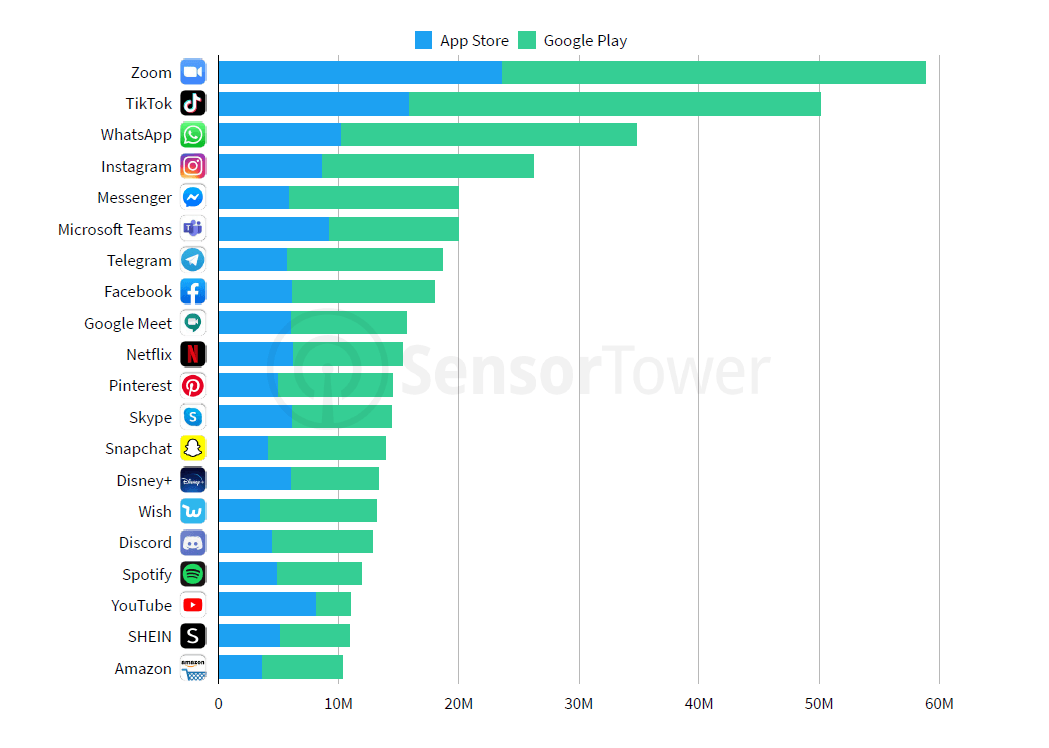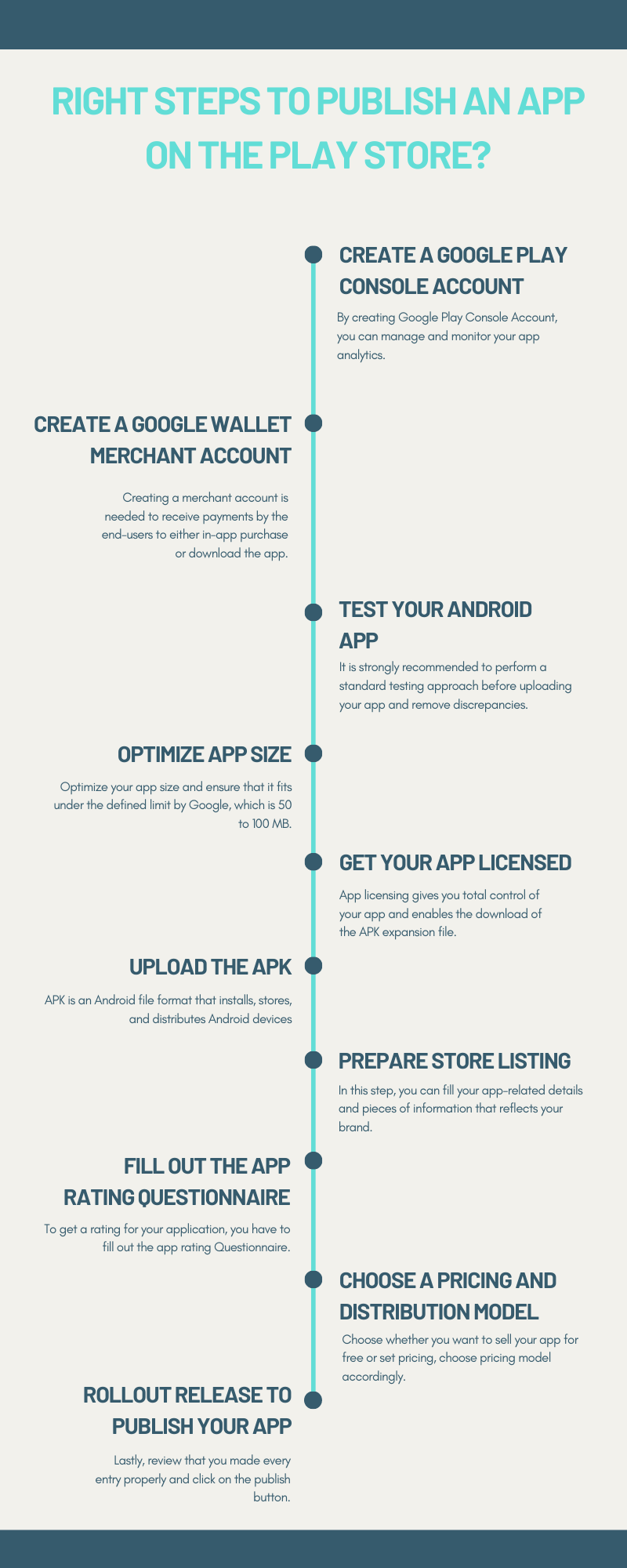The app development process has to go through many hurdles, but the industry experts are creating innovation every day. Platforms like Google Play Store and App Store are filled with a wide range of applications. Mobile apps have become the key resource to serve a variety of users’ needs. In the past few years, mobile applications have encountered billions of revenue. Thanks to the ever-evolving technologies that are strengthening mobile applications in a more powerful way.
Do you know that approximately 60% of users sleep with their smartphones, which is the first thing they check right after waking up in the morning? The affair between users and their smartphones has made entrepreneurs think about creating an app for almost everything.
In recent years, the smartphone industry has seen exponential growth worldwide. Startups to well-established companies, businesses are exploring new opportunities in the mobile app market. Entrepreneurs are trying every possible way to connect with users by developing user-centric applications. There have been millions of apps downloaded in decades.
Let’s have a closer look at the most downloaded apps in the past few years.

Source: Sensor Tower
Almost all businesses, including food, retailers, clothing, textiles, transport, home cleaning, mediation, etc., have mobile apps to keep their target audiences engaged with them. The main challenge for businesses is to choose the best platform where they can reach wider audiences. Two renowned platforms for app deployment – Google Play Store and App Store- have gained massive popularity.
If we talk about iOS app development, these are contributing to enhanced customer engagements. Different industry domains are making the best use of iPhone applications. It would be interesting to know what fraction of economic activities is challenged by the power of iOS applications during the forecast period of 2019-20.
Let’s have a quick look at the top iOS App Store categories, Q2 2019 – Q2 2020 by Sensor Tower.

On the other hand, Android apps are not left behind to transform various industry domains. When it comes to the gaming industry, it has dominated the Google play store.
Do you know approximately five times more game downloads take place on the Google play store than the iOS app store?
With the growing usage of Android mobile devices, Android apps have gained enough traction. Look at the stats by Sensor Tower to know the top Google Play Store app categories.

Stats like these clearly show how App Store and Google Play Store are prominent and excellent platforms to deploy your application. If you are wondering how to upload your app on the preferred medium, this guide is for you.
Let’s begin with the Android app store and know the steps to upload your app on it.
Steps to publish an application On Google Play Store

Create a Google Play Console Account
The first step is to create a Google Play Console account (also known as a Google Play Developer account). It is where you will manage and monitor your app analytics. After signing up for your account, you will proceed to the next step in submitting your app on Google play. To create your console account, you will be required to pay a registration fee of $25 that will be only a one-time fee.
Create a Google Wallet Merchant Account And Link It To Your Google Play Developer Account
Creating a merchant account is needed to receive payments by the end-users to either in-app purchase or download the app. The whole payment amount will be accepted in the Google Wallet merchant account. With only a few easy steps, you can create your merchant account:
- Sign in with your developer account.
- Go to the menu and click on Reports.
- Select Financial Reports.
- Click on Set Up a Merchant Account Now
- Add your business details.
- Click on Submit.
Congratulations! your merchant account is ready. You can now link it with your developer account and proceed.
Test Your Android App
Your business app is your most significant source of revenue generation. You must have put a lot of effort into making it customer-centric. You must have added modern and complex features. But, no matter how incredible features you have added to your app, it will be discarded if it does not meet user expectations and deliver seamless performance. It is strongly recommended to perform a standard testing approach before uploading your app.
When you enter your Google Play Console account, you can run open, internal, and closed testing of your app. You can also consider Android-powered devices to test your application. You might find some unanticipated bugs or discrepancies that need to be fixed before app submission.
Optimize App Size
Users avoid downloading apps that consume the vast space in their device storage. Although Google increased the app size from 50 MB to 100 MB. If your app size exceeds the defined limit by Google, you need to optimize it. You can follow the below steps to optimize your app size:
- Remove unused resources
- Compress PNG and JPEG files
- Use WebP file format
- Minimize resource use from libraries
- Support only specific densities
- Use vector graphics
- Reduce native and Java code
- Remove unnecessary generated code
- Maintain multiple lean APKs
- Reuse resources
You can also use Android APK’s Expansion file for the successful deployment of your application. It breaks down your app into small parts where each element has a size of 2GB.
Get Your App Licensed
Licensing your app gives you total control over your app. Google Play licensing service is primarily intended for premium or paid apps. However, app licensing enables the download of the APK expansion file. Licensing your Android app will prevent it from running your app on any devices unless the device checks in with the server. The server will confirm whether the device is permitted to run your app or not.
Upload The Android Package Kit
The Android package kit is an Android file format that installs, stores, and distributes Android apps in the operating system. You can either drag and drop the APK file or browse and navigate to upload it.
Prepare Store Listing
In this step, you can fill your app-related details and pieces of information. It will be better to communicate with an experienced Android app marketing team. They can assist you in setting up the perfect app profiles that reflect your brand. You can showcase the information that you want your user to see before downloading your app. Ensure that every detail that you mention is clear and accurate.
Below are the steps that you can follow in your app listing:
- Title
- Short Description
- Full Description
- Rating of the content
- URL for Privacy Policy
- Hi-resolution icon (512 x 512)((with alpha) 32-bit PNG)
- Email of Developer or Company
- Feature Graphic (1024 w x 500 h)(JPG or 24-bit PNG (no alpha))
- Type of application
- Screenshots of your app (JPEG or 24-bit PNG)(Min-320px,Max-3840px)
- Category of your app
Follow The Guidelines
Focus on the guidelines defined by Google while uploading your Android app on the play store. Hurting Google’s rules can kick out your app, which you will never want to happen. Before you release your app, cross-check that you have followed the guideline properly, and if you are missing out on any single factor, then fix it to proceed ahead.
Fill Out the App Rating Questionnaire
Google rates each application on the Google Play Store. To get a rating for your application, you have to fill out the app rating Questionnaire. Applications that don’t finish this process get recorded as “unrated” and are at risk of expulsion from the play store. The survey must be done each time you upload a new application or release an update. You can discover it under the Store presence option, then content rating.
Choose a Pricing And Distribution Model
Keep it noted, Google allows you to change your paid app to a free one later, but it does not let you switch from free to paid. So be very careful while choosing your price distribution model. Whether you want to sell your app for free to users or specify a cost for downloading, select the pricing model accordingly.
Rollout Release to Publish Your App
You are almost done! In the end, the only thing which is needed is to review, check every checkbox you have selected, every detail you have mentioned, ensure that everything is placed correctly. All checked? No alteration required? Click on the app release or publish button and wait for your app to reach the targeted audiences and countries you selected.
Now let’s discuss iOS app deployment. Highlight the points that you must consider while uploading your app to the app store. Let’s begin!
How to submit your app to the App Store?
Sign up for the Apple Developer Program
Get enrolled in the Apple Developer Program. It will connect you with consumers around the world of the App Store for iPad, Mac, iPhone, iMessage, Apple TV, Apple Watch, and on the Safari Extension Gallery. You will also get access to advanced app capabilities, beta software, app analytics, and extensive beta testing tools.
Prepare your app for submission
Ensure that your app follows all the guidelines of the App Store. Before you release your app, go with the app certification process. Later, your app will go through the review process before the final submission. Ensure that there is no factor missing that leads to a failure in-app review process. The reviewers will be judging your app based on some criteria that your app must fulfill.
Test Your App And Fix Any Bugs
Keep your app free from any bugs. Your mindset should be like a hacker; find how you can break the security feature. Test your app in the best way possible. Being a member of the Apple Developer Program, you will get access to TestFlight for beta testing.
Create Your App Store Listing Via App Store Connect
Okay, so now you need to create an app store listing. In the in-app listing, you will mention some details like:
- App name and category
- Privacy policy
- Pricing and availability
- Release options that include three points:
Immediately: It’ll be released as soon as it completes certification
Manually: Go into App Store Connect and release it
On a date: It’ll be published on a specific date
Upload Your App to App Store Connect Using Xcode
Once you confirm that your app is free from any errors and warnings, set up your signing and team information in Xcode. To submit your app on Xcode is relatively easy as it takes only a few steps, including profiles, certificates, etc. Xcode is capable of creating all these itself.
To create a complete app archive, choose the generic iOS device from the list of simulators. Now go to the product archive and let it bundle your application. This process will take time, depending upon your app size.
After going through a couple of checks and validation processes, your uploading process will be done successfully if your app will not be found broken. After the successful completion of the upload process, you will get a window opened. “Congratulations! Your application is halfway there to the iOS App Store.”
Submit Your App For Review
Lastly, you need to submit your app for the review process. You will have to answer a few questions related to your app. After that, your app will be in the queue, and you will have to wait for the approval. Usually, the review process took 1 to 2 weeks.
What’s Next?
Well, releasing your app is not a complex task to accomplish if you follow all steps correctly. What you need to think about is how to get your app featured on the play store? How can your app explore the global market opportunities? How can it be reachable to wider audiences? How to make it considerable and get valued by the users? Start promotion! Yes, follow the best app marketing practice and promote your app.
App Store Optimization (ASO)
App store optimization is the standard practice that every professional app development company follows. The ASO practice increases your app’s visibility on the app store and makes it recognized by the end-users. ASO is a standard approach that increases your conversion rates and maximizes revenue.
Promote App On Social Media
Social media has the power to skyrocket the popularity of any brand. If you use the potential of social media in the right way, nothing can be a great source as a social media platform to promote your products. Social media giants like Facebook, Instagram, and Pinterest are promising platforms to promote your app, generate traffic, and eventually increase downloads.
Release Periodic Updates
You cannot leave the app right after its deployment. You need to put a lot of effort into timely updates and maintenance. Release new features, add the latest tech stack, update it as per the latest market demand, fix whatever can degrade your app’s performance.
Conclusion
I hope this guide will help you understand the proper steps to upload your app on the preferred platform. If you face any challenges or have doubts about the complete app deployment process, you can connect with Sparx IT Solutions, a leading brand for mobile app solutions. They have a pool of talented app developers who can help you deploy your app and assist you with the best mobile app services.



